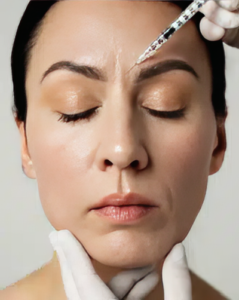BHRT stands for Bioidentical Hormone Replacement Therapy. It is a type of hormone therapy that involves the use of hormones that are chemically identical to those naturally produced by the human body. Bioidentical hormones are derived from plant sources, such as yams or soy, and are compounded or synthesized to match the molecular structure of hormones produced in the body.
Here are some key points about BHRT:
Hormones: Bioidentical hormones used in BHRT may include estrogen, progesterone, and testosterone, among others. These hormones can be administered in various forms, including creams, gels, patches, pills, or pellets implanted under the skin.
Purpose: BHRT is often prescribed to relieve symptoms associated with hormonal imbalances or deficiencies, such as menopause, perimenopause, and andropause. Common symptoms of hormonal imbalance may include hot flashes, night sweats, mood swings, fatigue, decreased libido, vaginal dryness, erectile dysfunction, and cognitive changes.
Individualized Treatment: One of the key principles of BHRT is individualized treatment. Unlike traditional hormone replacement therapy (HRT), which typically involves standard doses of synthetic hormones, BHRT aims to customize hormone therapy based on each individual’s specific hormone levels, symptoms, and health goals. This may involve hormone testing and adjustments to hormone dosages to achieve optimal balance and symptom relief.
Safety and Controversy: Advocates of BHRT claim that bioidentical hormones are safer and more effective than synthetic hormones used in traditional HRT. They argue that because bioidentical hormones closely mimic the body’s natural hormones, they are better tolerated and less likely to cause adverse effects. However, the safety and efficacy of BHRT remain controversial, and there is limited scientific evidence to support its superiority over traditional HRT. Critics raise concerns about the lack of standardized formulations, potential risks of compounded hormones, and the need for further research to establish long-term safety and effectiveness.
Prescription and Monitoring: BHRT should be prescribed and monitored by qualified healthcare professionals, such as physicians specializing in integrative or functional medicine, hormone therapy, or menopause management. Before starting BHRT, individuals should undergo a comprehensive evaluation, including a thorough medical history, physical examination, and hormone testing if necessary, to determine the appropriateness of treatment and optimize hormone therapy outcomes.
Overall, BHRT is a personalized approach to hormone therapy that aims to address hormonal imbalances and alleviate associated symptoms using bioidentical hormones. While it may offer benefits for some individuals, it’s essential for patients to discuss the potential risks and benefits of BHRT with their healthcare provider and make informed decisions about treatment options.



